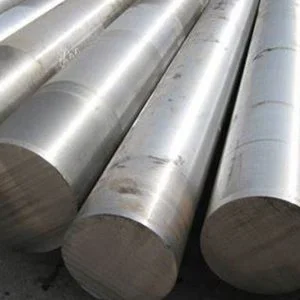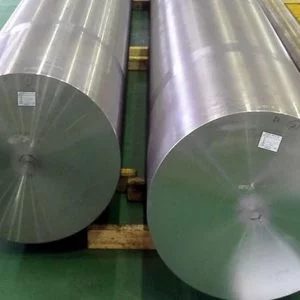Introduction

In the realm of modern manufacturing, materials play a crucial role in determining the performance, durability, and cost-effectiveness of products. High strength low alloy (HSLA) steel is a notable material in this context, offering a blend of strength, toughness, and flexibility that makes it indispensable for a wide range of applications. This blog explores the role of HSLA steel in contemporary manufacturing, delving into its properties, advantages, applications, and considerations for its use.
What is High Strength Low Alloy Steel?
High strength low alloy steel is a type of steel that combines enhanced mechanical properties with reduced alloying elements compared to traditional carbon steels. high strength low alloy steel steels are designed to offer better strength and toughness while maintaining good weldability and machinability. They are used in various applications where superior performance is required.
Key Characteristics of high strength low alloy Steel
- High Strength: Provides better resistance to deformation under load compared to standard carbon steels.
- Low Alloy Content: Contains a lower percentage of alloying elements, which makes it cost-effective.
- Improved Toughness: Enhances the material’s ability to absorb energy and resist impact.
- Good Weldability: Ensures ease of joining using welding techniques.
Benefits of Using High Strength Low Alloy Steel
Enhanced Mechanical Properties
HSLA steel offers superior strength and durability, which improves the performance and longevity of components. This property makes it suitable for demanding applications where structural integrity is crucial.
Weight Reduction
Due to its high strength, HSLA steel allows for the use of thinner sections while achieving the same load-bearing capacity. This results in lighter structures and components, which can lead to cost savings in transportation and material usage.
Cost-Effectiveness
Compared to other high-strength materials, HSLA steel is more affordable due to its lower alloy content. This balance of performance and cost makes it an attractive option for many industries.
Improved Corrosion Resistance
Certain grades of HSLA steel are designed with enhanced resistance to corrosion, extending the lifespan of components and reducing maintenance needs.
Versatility in Applications
HSLA steel’s versatility allows it to be used in a wide range of applications, from automotive and aerospace industries to construction and infrastructure projects.
Excellent Weldability
The low alloy content of HSLA steel facilitates easier welding and joining, making it suitable for complex structures that require high-strength connections.
Enhanced Ductility and Formability
HSLA steel exhibits good ductility and formability, allowing it to be shaped and formed into various profiles and structures without compromising its strength.
Table: Comparison of high strength low alloy Steel with Other Steel Types
| Steel Type | Strength | Alloy Content | Weldability | Cost | Typical Applications |
|---|---|---|---|---|---|
| High Strength Low Alloy (HSLA) Steel | High | Low | Excellent | Moderate | Automotive, construction, pipelines |
| Carbon Steel | Moderate | None | Good | Low | General construction, basic applications |
| Stainless Steel | High | High | Good | High | Food processing, medical devices |
| Tool Steel | Very High | Varies | Moderate | High | Cutting tools, molds |
Applications of High Strength Low Alloy Steel
Automotive Industry
In the automotive sector, HSLA steel is used for manufacturing structural components such as chassis and body panels. Its high strength-to-weight ratio contributes to vehicle safety and performance while reducing overall weight.
Construction
HSLA steel is employed in construction for structural steelwork, including beams, columns, and bridges. Its ability to withstand high loads and environmental conditions makes it ideal for use in infrastructure projects.
Aerospace
In aerospace applications, HSLA steel is used for components that require high strength and durability. Its performance under stress and temperature variations is critical for ensuring the safety and reliability of aircraft.
Energy Sector
The energy sector utilizes HSLA steel for pipelines, pressure vessels, and structural supports. Its resistance to stress and environmental factors makes it suitable for handling harsh operating conditions.
Heavy Machinery
HSLA steel is used in the manufacture of heavy machinery and equipment, such as excavators and cranes. Its strength and toughness contribute to the durability and performance of these machines.
Considerations When Using High Strength Low Alloy Steel

Material Selection
Choosing the right grade of HSLA steel depends on the specific requirements of the application, including strength, toughness, and environmental resistance.
Fabrication and Processing
HSLA steel can be challenging to machine and weld, requiring careful consideration of fabrication techniques and equipment to ensure optimal results.
Cost vs. Performance
While HSLA steel offers a balance of performance and cost, it is important to evaluate the trade-offs between material costs and the benefits provided for each application.
Quality Control
Ensuring the quality of HSLA steel involves adhering to industry standards and specifications, conducting material tests, and monitoring the manufacturing process to achieve desired properties.
Conclusion
High strength low alloy steel plays a pivotal role in modern manufacturing by offering a unique combination of strength, durability, and cost-effectiveness. Its applications span various industries, from automotive and construction to aerospace and energy. Understanding the benefits and considerations of HSLA steel allows manufacturers to leverage its properties effectively, resulting in improved performance, reduced costs, and enhanced product quality.
FAQ
Q:What is high strength low alloy steel?
A:HSLA steel, or high strength low alloy steel, is a type of steel designed to provide superior strength and toughness while containing a lower percentage of alloying elements compared to traditional carbon steels. It is used in applications requiring enhanced mechanical properties.
Q:How does high strength low alloy steel compare to carbon steel?
A:HSLA steel offers higher strength and improved toughness compared to standard carbon steel. It also has lower alloy content, making it more cost-effective. HSLA steel is better suited for applications that demand higher performance and durability.
Q:What are the common applications of high strength low alloy steel?
A:HSLA steel is used in various industries, including automotive, construction, aerospace, energy, and heavy machinery. It is utilized for structural components, pipelines, pressure vessels, and machinery, where strength and durability are essential.
Q:Is high strength low alloy steel weldable?
A:Yes, HSLA steel generally has good weldability due to its lower alloy content. However, proper welding techniques and equipment are required to achieve optimal results and ensure the integrity of the weld.
Q:What factors should be considered when selecting high strength low alloy steel?
A:When selecting HSLA steel, consider factors such as the required strength, toughness, corrosion resistance, and cost. The specific grade of HSLA steel should align with the application’s demands and performance criteria.
Q:How does HSLA steel’s cost compare to other steel types?
A:HSLA steel is more affordable than some high-strength materials like stainless steel and tool steel due to its lower alloy content. It provides a good balance of performance and cost, making it a practical choice for many applications.
Q:What maintenance is required for high strength low alloy steel components?
A:HSLA steel components should be regularly inspected for signs of wear, corrosion, or damage. Proper maintenance involves routine cleaning, protective coatings if needed, and addressing any issues promptly to ensure the longevity and performance of the components.
